All you need to know to make an old building sustainable
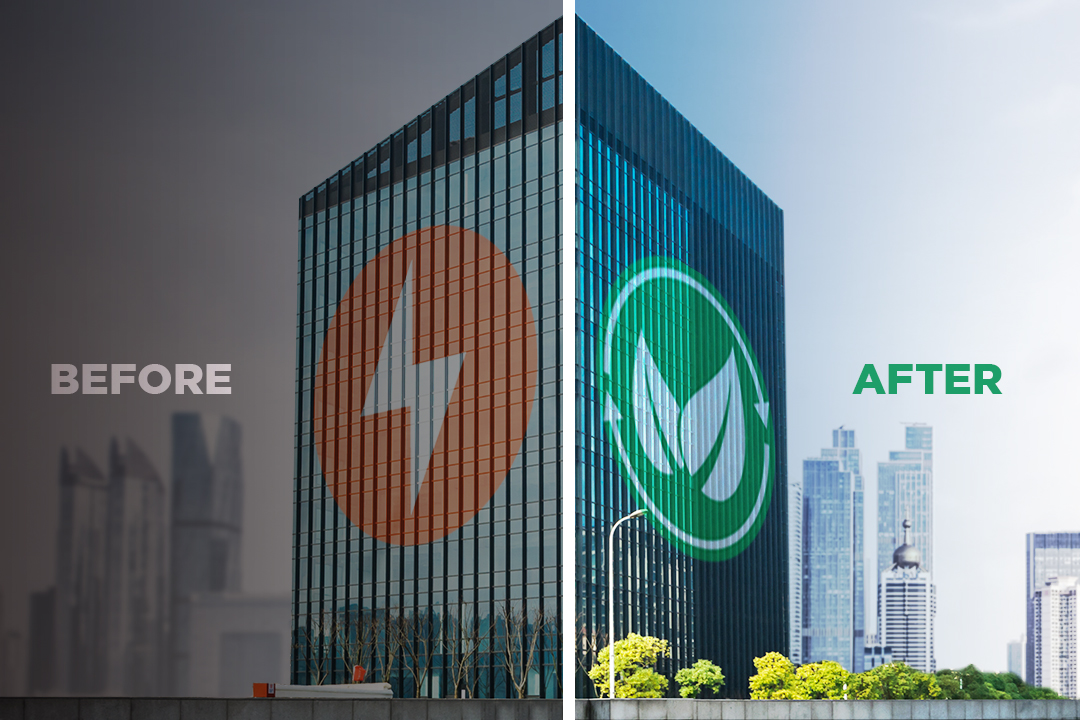
Sustainable building systems, technologies, and solutions not only help us conserve resources, but also decrease the carbon footprint normally associated with buildings.
In the following article, we will cover:
- What is a sustainable building?
- What major environmental issues does a sustainable building solve?
- How to make and old building sustainable
- Sustainable building examples around the world
Buildings consumption of energy
According to latest numbers, commercial and residential buildings are collectively consuming approximately 29% of the world’s energy and feedstock fuels. What’s even more concerning is that their contribution is expected to significantly rise in the next couple decades. See below:
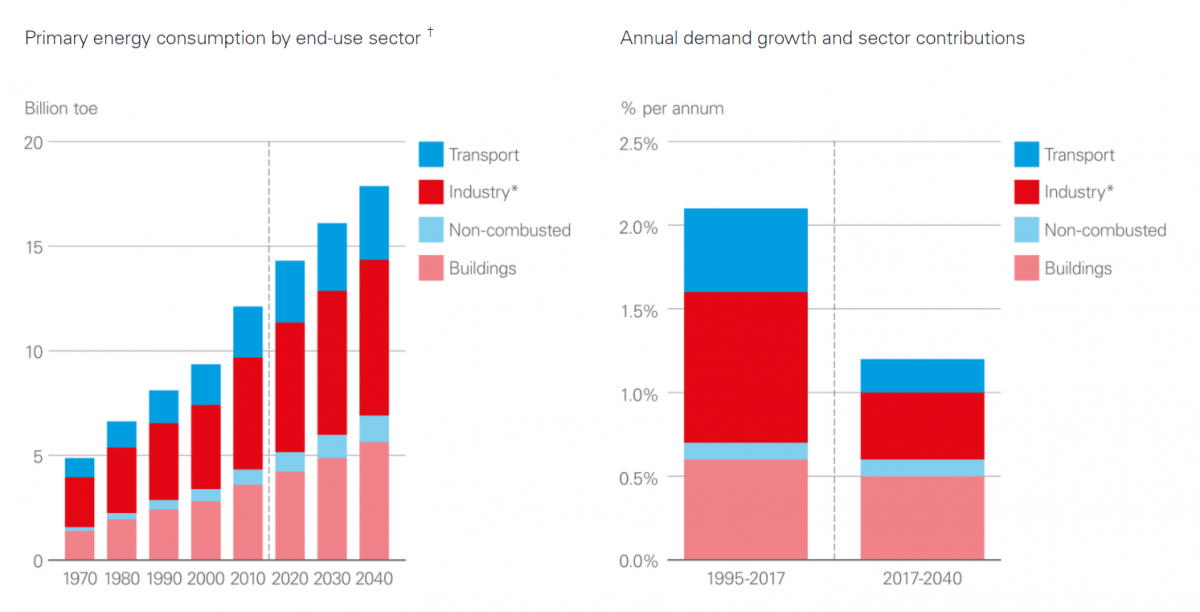
Images courtesy BP.com
This rising energy consumption has also been drastically increasing the building industry’s carbon footprint. CO2 emissions from electric and heat sources within buildings accounted for approximately 10 Giga tonnes (GT) of CO2 in 2018, an unprecedentedly high number. This is higher than the 8.5 Gt CO2 emitted by the materials industries, and the 3.6 Gt CO2 emitted by the transportation sector.
The above numbers indicate just how critical it’s for buildings to be more energy-efficient. This not only requires an adoption of smart and sustainable technologies, but also a change in the operating and maintenance models.
However, you don’t have to completely alter your building’s façade, or replace all of its hardware and machinery for it to become sustainable. You simply need to choose the right (interoperable) solutions, and implement the right procedures. In this article, we will cover everything you need to know to transform an old building into a green and sustainable one:
What (really) is a sustainable building?
Any building that uses resources efficiently, has minimal-to-no negative impacts on the environment, a low carbon footprint, and a healthy indoor climate can be called sustainable.
Achieving such characteristics often requires (among other things) a strong dependence on renewable energy sources, sustainable building systems (like an adjustable heating and ventilation system), a smart energy management solution, and environment-friendly waste management procedures.
Features of a sustainable building:
There are many features of a green and sustainable building that sets it apart from its energy-intensive counterparts. Let’s look at some:
- Sustainable architecture: A sustainable building has an architecture, in addition to systems, that adds to its energy-efficiency and environmental friendliness. Maximizing the use of natural light and ventilation by carefully orienting the façade and placing windows and skylights can go a long way in reducing a building’s energy utilization. Similarly, using recycled materials as much as possible during construction can also help.
- Renewable energy: A sustainable building is mainly-if-not-completely dependent on renewable sources for its energy. This can involve using solar panels, or sourcing from a renewable energy service provider.
- Insulation: In the bid to maximize a building’s thermal protection, environment and ozone-friendly insulation techniques are used.
- Automatically-adjusting HVAC systems: A HVAC (Heating, ventilation, and cooling) system is arguably the biggest consumer of a building’s energy. After all, it’s responsible for maintaining an optimal, healthy indoor climate for the occupants. In a sustainable building, an HVAC system can either reprogram itself, or get reprogrammed by a supporting solution, based on different variables like occupancy, outdoor climate, and weather forecast.
- Reduced water usage: It takes a lot of energy to clean water and make it reusable for human consumption. Sustainable building solutions thus implement modern conservation and reuse techniques, like low flush toilets, aerated taps, and low-flow showers, along with rainwater harvesting.
- Energy and carbon monitoring: There is always potential to save even more energy, and be even more environment-friendly. To that end, there must be a way to monitor a sustainable building’s energy consumption and carbon emissions. Energy management solutions can provide real-time data from different parts of a building, which can yield actionable insights, and even help in identifying potential flaws in some cases.
What major environmental issues do a sustainable building solve?
As we have already seen above, buildings are one of the primary consumers of energy, and one of the primary producers of greenhouse gases, at the global level. But those are not the only environmental challenges that sustainable buildings help us solve. Here are a few others:
- Waste minimization: In 2016, all of the cities around the world, collectively generated 2.01 billion tons of solid waste. If we extrapolate projections using the rapidly increasing urbanization rates, we could see a 70% growth in waste generation, come 2050. Since buildings of all types (educational, residential, commercial etc.) generate heavy amounts of waste, it’s important that this issue is addressed by sustainability measures.
- Ozone depletion: Many ozone-depleting substances are used in refrigeration, building insulation, and air conditioning. Since ozone-friendly alternatives are preferred for sustainable buildings, it goes a long way in reducing levels of ozone depletion.
- Resource overutilization: Each year we are using resources that exceed nature’s ability to regenerate. So much so that it would take 1.5 Earths to cater for our growing resource demands. By using the bare-minimum amount of resources (energy, electricity, water, fuels etc.), sustainable buildings are much less of a burden on our planet than their resource-intensive counterparts.
- Impacts of construction: The construction sector accounts for 23% of the global air pollution, 40% of the drinking water pollution, 50% of the wastes, and 50% of the climate change occurring around the world. Conversely, sustainable building architects and construction firms strive to reduce these numbers as much as possible.
How to make an old building sustainable
A widely prevalent misconception among building owners and managers is that sustainability retrofits will not only cost a lot, but also cause extensive disruptions in business. However, in reality, none of that is true.
Making a building sustainable doesn’t have to require an entire rebuild, or a complete architectural and hardware revamp. It can also be done by extending functionalities of some existing modules, and incorporating some new equipment/software. Here are a few tips to get you started:
- Get insulated: Insulating a building has more benefits than you can imagine. Not only does it drastically reduce energy costs by decreasing heat loss, it also prevents moisture condensation and enhances the acoustic performance by reducing levels of noise. However, while insulating, it’s recommended to investigate if the building’s ventilation is good enough to support the installation.
- Automate your HVAC: Traditional HVAC systems have no way to automatically adjust their throttle based on the changing occupancy rates or outdoor climates. So, in a typical old building, an HVAC may keep pumping fresh air into an empty building, or keep running on maximum settings even if it starts snowing outside. This leads to a huge wastage of energy. In sustainable buildings, smart solutions (like ClevAir) can reprogram the HVAC in real-time, based on aforementioned variables.
- Go renewable: Installing solar panels on the roof and integrating with your existing electrical system doesn’t take more than a few days, and doesn’t usually cause much disruption in operations. The key is to slowly embark on the journey to go full renewable.
- Using LEDs: Simply replacing regular light bulbs with LEDs can save you up to 75% energy. When run at lower power levels, the savings rise even more.
- Use water more efficiently: Retrofitting your washrooms with low-flow faucets, urinals, and showerheads can help conserve more water. You can also go a step further and start harvesting, processing and using rainwater.
- Charging points for electric vehicles: A huge hindrance in the adoption of electric vehicles is range anxiety, which can be defined as the fear of an electric vehicle’s battery running out before the trip completes. By adding a charging point to your facility, be it a residential or commercial one, you can play a part in promoting the use of electric vehicles.
- Natural lighting: Incorporating natural light into an old building is also possible without any major architectural changes. By using light shelves, sky lights, light pipes, solar shading, and light redirecting devices, any old building can be naturally illuminated.
Examples of sustainable buildings around the world
For playing a part in the fight against environmental degradation, every sustainable building deserves plaudits. With that said, here’s a look at some of the best sustainable building examples from around the world:
The Crystal by Siemens, London
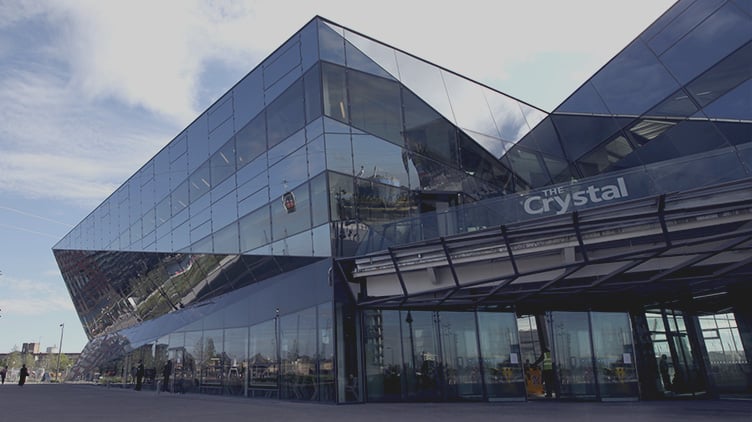
The Crystal, an event venue and visitor center built by Siemens in London, is one of the most sustainable buildings in the world. It has both the prestigious sustainable building certifications, the LEED Platinum and BREEAM Outstanding under its belt. Some of its smart and sustainable features are: intelligent energy management, thermal wheels that recover more than half of the outgoing energy, 70% natural lighting, a zero-discharge water facility, and electricity usage monitoring.
The Bullitt Center, Seattle
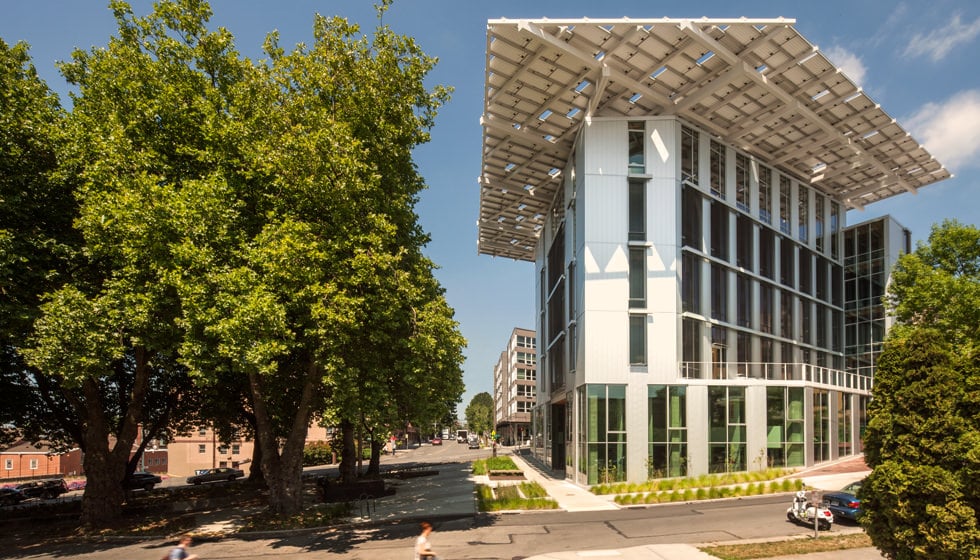
The Bullitt Center is a six-story commercial office building located in Seattle, Washington. The building is completely self-sufficient when it comes to water and electricity. Photovoltaic cells on its roof act as the primary source of electricity. Its state-of-the-art water and sewerage processing systems ensure that it doesn’t depend on the city’s water supply or sewerage systems.
The Shanghai Tower, Shanghai

The second tallest building in the world, the Shanghai tower, also holds its own when it comes to sustainability. It uses wind turbines to enlighten most of its outer and park areas. All of its ventilation, heating, and lighting are smart, which lead to massive reductions in energy utilization. Its insulating glass façade has been designed in a way to maintain the indoor temperature to an optimal range.
Khoo Teck Puat Hospital, Singapore
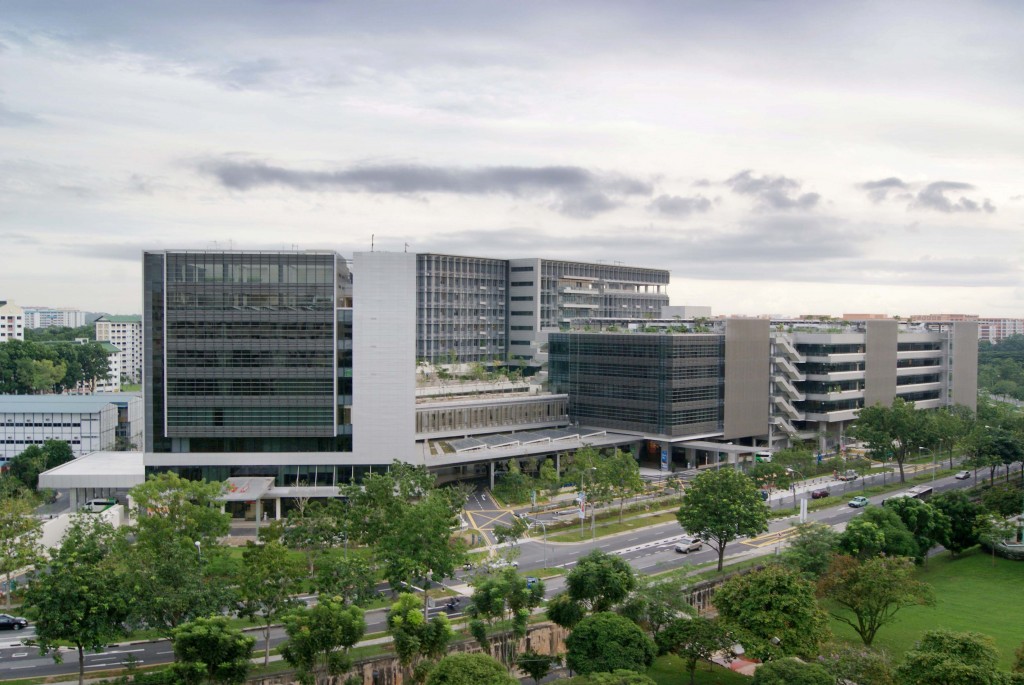
Singapore may be one of the most expensive cities in the world, but it is also home to some of the most sustainable buildings worldwide. The Khoot Teck Puat Hospital is a prime example. The building uses solar panels for all its electric needs, and a solar thermal system to produce hot water that runs throughout the hospital. Water from the adjacent Yishun Pond is pumped into the hospital’s irrigation system, where it gets processed before being used for landscaping purposes.
Finansparken Bjergsted, Norway

The Finansparken Bjergsted in Stavenger, Norway is the epitome of sustainable architecture. 7 of its 10 levels have been made completely out of wood, making it the largest wooden commercial building in Europe. The ventilation, heating, lighting (both artificial and sunlight) can be adjusted via a smartphone application. All of the building’s electrical components have been tagged, making them identifiable and manageable from the central system.
CIS Tower, Manchester
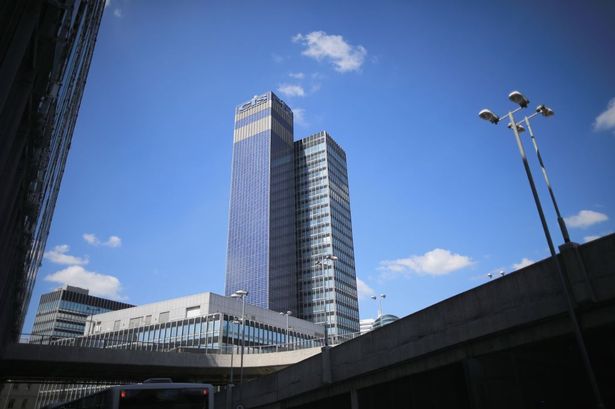
Last but not least, the CIS Tower in Manchester is one of UK’s tallest buildings. A whopping £5 Million was spent on its solar panel retrofit, approximately 4 decades after its construction in 1962. The Institution of Mechanical Engineers has referred to the building as the “largest commercial solar façade in Europe” It has more than 7,000 photovoltaic cells that provide up to 180 megawatt hours of energy every year, along with 24 wind turbines that also act as an energy source.
Final word
Up until a decade or so ago, there were only a handful of sustainable buildings around the world. For example, in 2006, there were only 296 LEED-certified projects in the United States. However, the number grew to 67,200 in 2018. representing a 226-time increase.
Similarly, the availability of smart and sustainable building management systems has also risen exponentially in recent years. Solutions like ClevAir can integrate with existing building systems and start saving energy in no time. The green and sustainable building market is among the fastest growing industries in the US. Here’s hoping that with more and more buildings being made green, we can soon envision a sustainable future for our planet.

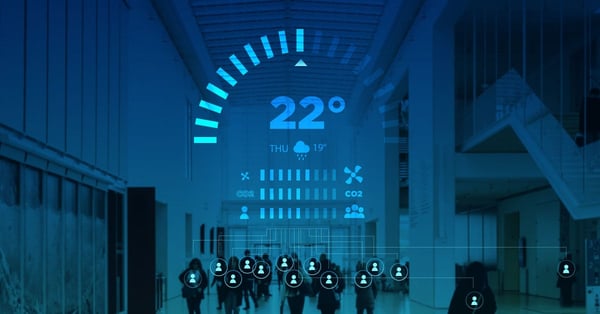


Comments
Add Comment